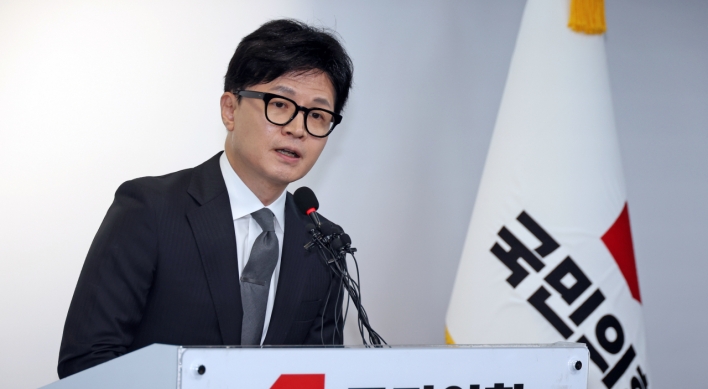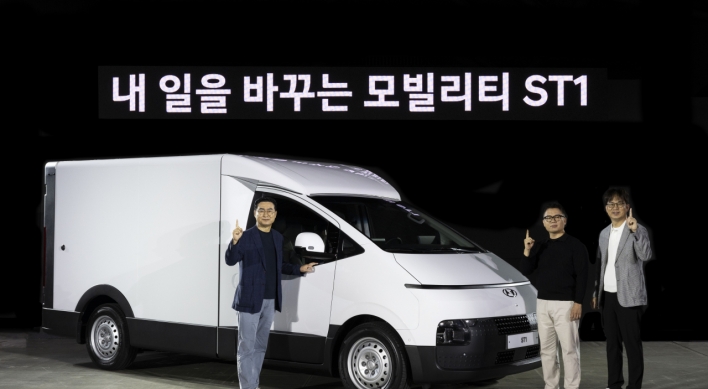[News Focus] Men in Sejong, women in Jeju have highest employment rate
Wide gender, regional gaps seen nationwide
By Kim Yon-sePublished : Nov. 11, 2021 - 16:23

SEJONG – The most recent employment rate was the highest among male residents in Sejong and female residents in Jeju Province, according to a state agency’s analysis of figures from 17 major regions, eight cities and nine provinces, in South Korea.
Data from Statistics Korea showed that the nation’s employment rate for people aged 15-64 posted 60.4 percent as of June 2021 (the latest statistics available), in which a wide gap between men and women is seen -- 70 percent for men vs. 51.2 percent for women.
Data from Statistics Korea showed that the nation’s employment rate for people aged 15-64 posted 60.4 percent as of June 2021 (the latest statistics available), in which a wide gap between men and women is seen -- 70 percent for men vs. 51.2 percent for women.

These figures were low compared to December 2019 -- a month before COVID-19 initially hit the nation -- when the employment rate reached 61.7 percent (71.1 percent for men and 52.5 percent for women).
Though the employment index is likely to improve after touching the bottom in the first half of 2020, it has been found that the disparities among residents in the 17 major regions, as well as the gender gap, were quite wide.
Sejong topped the list in the employment rate for men with 75.5 percent in June. This contrasts with 65.1 percent among men in Busan (the lowest), and 67.6 percent in both Seoul and Gwangju (the second-lowest).
The highest figure in Sejong is attributed to the fact that a significant portion of its male employees are working at the nation’s largest government complex or state-funded agencies in the administrative city, which have robust job security.
But the sagging figures -- which stayed below the nationwide average for men -- in Seoul, Busan and Gwangju suggest unstable job security and high unemployment rates in metropolitan cities, which have been further worsened by the pandemic.
Among the other regions, whose figures fell short of the nationwide average were Daegu at 68.3 percent, Ulsan at 68.5 percent and Daejeon at 69.1 percent.
Jeju ranked No. 2 in the male employment rate (73.9 percent), followed by South Chungcheong Province (73.5), South Jeolla Province (73.4), North Chungcheong Province (72.4), and both Gyeonggi Province and North Gyeongsang Province (71.5).
For women, the No. 1 location was Jeju Province at 63.6 percent, which is higher by about 12 percentage points than the nationwide average of female employment rate, 51.2 percent.
A dominant portion of women on the nation’s largest island Jeju are working as female divers for fisheries activities -- known as “haenyeo” -- or farmers or small-business owners or services-industry employees.
This represented a big disparity with 45.9 percent in Ulsan (the lowest in women’s employment rate), 48 percent in Busan (second-lowest), 48.7 percent in Daegu and 49.9 percent in Gyeonggi Province.
Though female residents in Sejong (51.6 percent) exceeded the average, its ranking among the 17 regions stood at 10th, which contrasted to the No. 1 position of male residents in Sejong.
A large portion of young female civil servants in their 20s and 30s -- working at the government complex or state-run agencies in the administrative city -- are residents in Seoul, Gyeonggi or other areas officially, on the basis of the state resident registration. They commute or temporarily live in studios and apartments around the complex.
Women in Seoul (51.7 percent) and Incheon (52 percent) placed ninth and seventh, respectively, outstripping figures in the other six major cities.
Next to Jeju, Gangwon Province -- where many women are engaging in farming or fisheries -- ranked second at 56 percent. South Jeolla Province (55.5 percent) was the third, trailed by North Chungcheong Province (54.3 percent) and South Chungcheong Province (53.4 percent).
Though the employment index is likely to improve after touching the bottom in the first half of 2020, it has been found that the disparities among residents in the 17 major regions, as well as the gender gap, were quite wide.
Sejong topped the list in the employment rate for men with 75.5 percent in June. This contrasts with 65.1 percent among men in Busan (the lowest), and 67.6 percent in both Seoul and Gwangju (the second-lowest).
The highest figure in Sejong is attributed to the fact that a significant portion of its male employees are working at the nation’s largest government complex or state-funded agencies in the administrative city, which have robust job security.
But the sagging figures -- which stayed below the nationwide average for men -- in Seoul, Busan and Gwangju suggest unstable job security and high unemployment rates in metropolitan cities, which have been further worsened by the pandemic.
Among the other regions, whose figures fell short of the nationwide average were Daegu at 68.3 percent, Ulsan at 68.5 percent and Daejeon at 69.1 percent.
Jeju ranked No. 2 in the male employment rate (73.9 percent), followed by South Chungcheong Province (73.5), South Jeolla Province (73.4), North Chungcheong Province (72.4), and both Gyeonggi Province and North Gyeongsang Province (71.5).
For women, the No. 1 location was Jeju Province at 63.6 percent, which is higher by about 12 percentage points than the nationwide average of female employment rate, 51.2 percent.
A dominant portion of women on the nation’s largest island Jeju are working as female divers for fisheries activities -- known as “haenyeo” -- or farmers or small-business owners or services-industry employees.
This represented a big disparity with 45.9 percent in Ulsan (the lowest in women’s employment rate), 48 percent in Busan (second-lowest), 48.7 percent in Daegu and 49.9 percent in Gyeonggi Province.
Though female residents in Sejong (51.6 percent) exceeded the average, its ranking among the 17 regions stood at 10th, which contrasted to the No. 1 position of male residents in Sejong.
A large portion of young female civil servants in their 20s and 30s -- working at the government complex or state-run agencies in the administrative city -- are residents in Seoul, Gyeonggi or other areas officially, on the basis of the state resident registration. They commute or temporarily live in studios and apartments around the complex.
Women in Seoul (51.7 percent) and Incheon (52 percent) placed ninth and seventh, respectively, outstripping figures in the other six major cities.
Next to Jeju, Gangwon Province -- where many women are engaging in farming or fisheries -- ranked second at 56 percent. South Jeolla Province (55.5 percent) was the third, trailed by North Chungcheong Province (54.3 percent) and South Chungcheong Province (53.4 percent).



![[Exclusive] Korean military set to ban iPhones over 'security' concerns](http://res.heraldm.com/phpwas/restmb_idxmake.php?idx=644&simg=/content/image/2024/04/23/20240423050599_0.jpg&u=20240423183955)

![[Graphic News] 77% of young Koreans still financially dependent](http://res.heraldm.com/phpwas/restmb_idxmake.php?idx=644&simg=/content/image/2024/04/22/20240422050762_0.gif&u=)



![[Pressure points] Leggings in public: Fashion statement or social faux pas?](http://res.heraldm.com/phpwas/restmb_idxmake.php?idx=644&simg=/content/image/2024/04/23/20240423050669_0.jpg&u=)









